If you buy through our links, we may earn an affiliate commission. This supports our mission to get more people active and outside.Learn about Outside Online's affiliate link policy
The 5 Best Cross Country Spikes of 2025
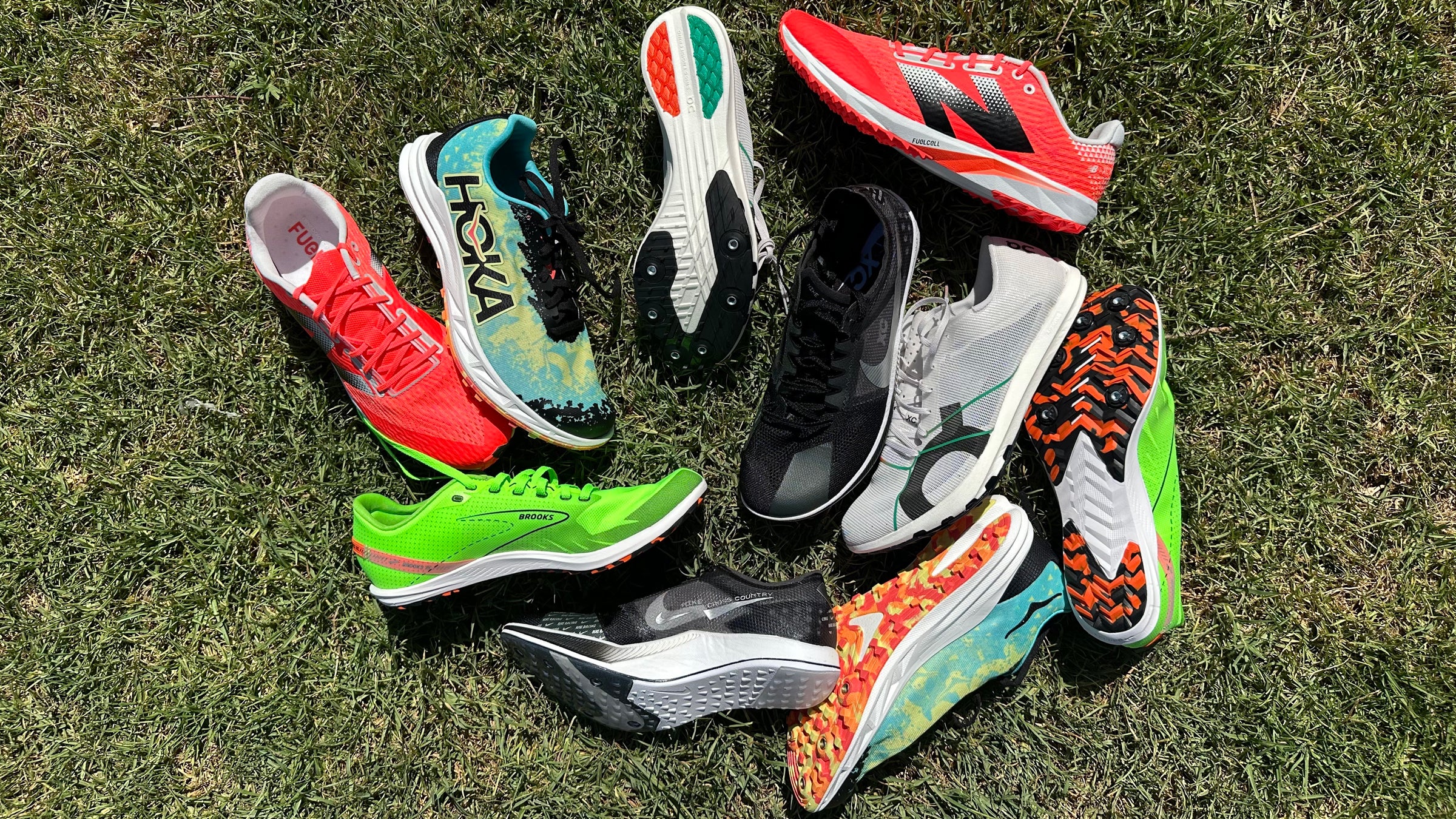
(Photo: Cory Smith)
The 5 Best Cross Country Spikes of 2025
The start of a new school year and the shift from summer’s relentless heat to fall’s crisp, cool air signal that cross country is right around the corner. Like a pack of migrant birds flying south for the winter, cross-country runners instinctively feel the change. A fresh season awaits, full of possibility. And what better way to embrace that clean slate than by retiring last season’s worn-out, mud-caked cross country spikes and lacing up a brand-new pair, ready to propel you towards your best season yet.
We put five experienced cross country runners in this year’s most popular XC spikes to sort out the best. Here’s what we found.
At a Glance
- Best Overall: Nike ZoomX Dragonfly XC ($170)
- Runner Up: On Cloudspike XC ($160)
- Best Budget: New Balance FuelCell XC7 v5 ($70)
- Best Ground Feel: Brooks Draft XC ($70)
- Best for Beginners: Hoka Crescendo XC ($90)
The Best Cross Country Spikes
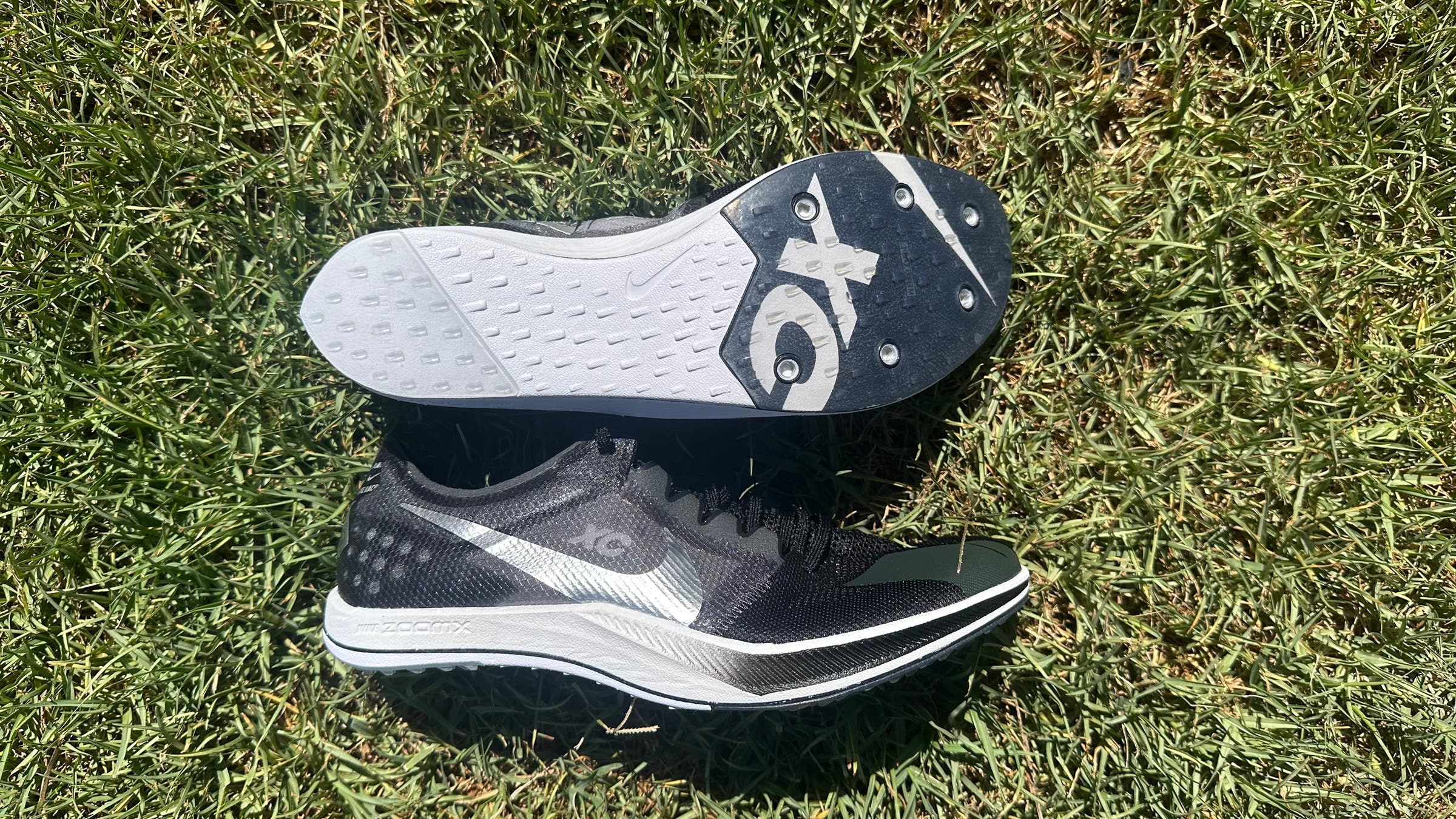
Best Overall
Nike ZoomX Dragonfly XC
Weight: 6.2 oz (men’s 8.5, women’s 10)
Spikes: 6-pin removable
Pros and Cons
⊕ Lively and responsive foam
⊕ Semi-stiff embedded plate boosts propulsion
⊕ Thin, tough upper
⊗ Forward-balanced stance can strain the calves and Achilles
⊗ Not ideal for beginners
The Dragonfly XC, Nike’s cross-country version of their renowned ZoomX Dragonfly track spike, emerged as the clear favorite in our test. “From a performance standpoint, this shoe is in another universe from all the other models tested,” raved one tester.
Made with full-length PEBA-Based ZoomX foam and a semi-stiff embedded plate, the XC Spike balances comfort and propulsion. One tester described the cushioning as perfect, adding, “It has the right amount of foam in all the right places, especially towards the forefoot and midfoot. The foam still allows you to feel the ground when you strike, and has a very alive feeling.”
That said, the aggressive positioning and curvature of the midsole and plate encourage a forward-balanced stance, which requires greater engagement of the Achilles and calves. Beginners or those with calf or Achilles issues may want a flatter spike. Testers all agreed the running spike fits true to size in length with a slightly broader toebox. The Vapor Weave upper is thin, but testers found it tough-skinned, providing good protection from moisture, dirt, and mud.
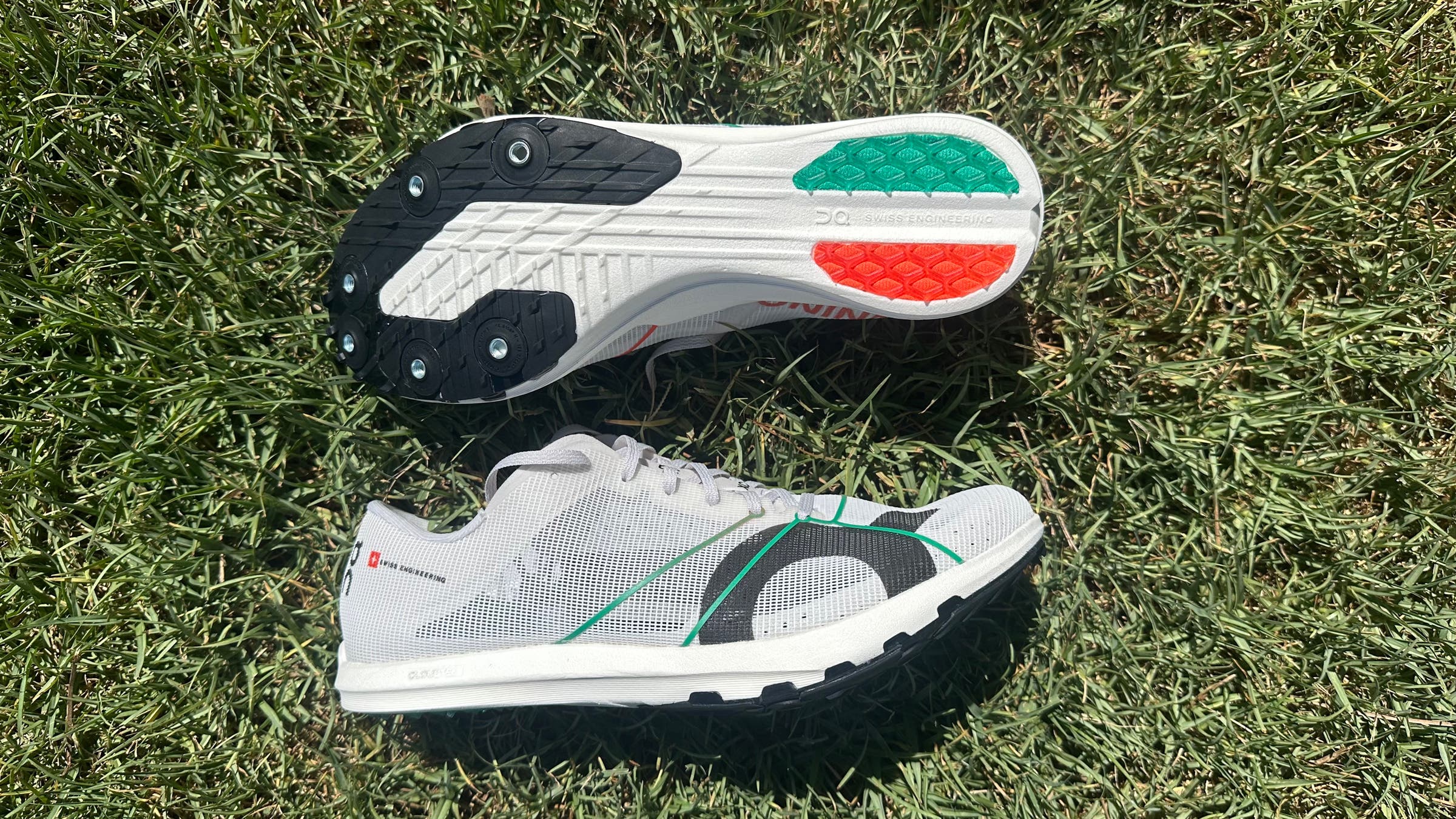
Runner Up Best Overall
On Cloudspike XC
Weight: 5.0 oz (men’s 9); 4.2 oz (women’s 10)
Spikes: 6-pin removable
Pros and Cons
⊕ Extremely lightweight
⊕ Agile and smooth ride
⊕ Breathable and fast-draining upper
⊗ Runs slightly small
⊗ Upper’s rough texture can seem abrasive at first
As the lightest cross country spike we tested, the Cloudspike XC received high marks for its agile and smooth ride. A thin layer of On’s PEBA-based Helion HF hyper foam midsole provides just enough cushioning, while the embedded speedboard adds stiffness. One tester said the combination provides “extra pop with faster speeds.” The shape isn’t as aggressively forward-leaning as the Nike ZoomX Dragonfly XC, but it still caters to forefoot strikers.
This XC spike runs on the smaller side, but not so much that we’d recommend sizing up. Initially, the one-piece upper seems like it would be abrasive against the skin due to its rough texture, but testers reported the airy mesh held their feet securely and proved to be one of the better uppers we tested for breathability and efficient water drainage.
If a weightless feel, agile foothold, and smooth ride is what you’re after, the On Cloudspike XC is a worthy contender.
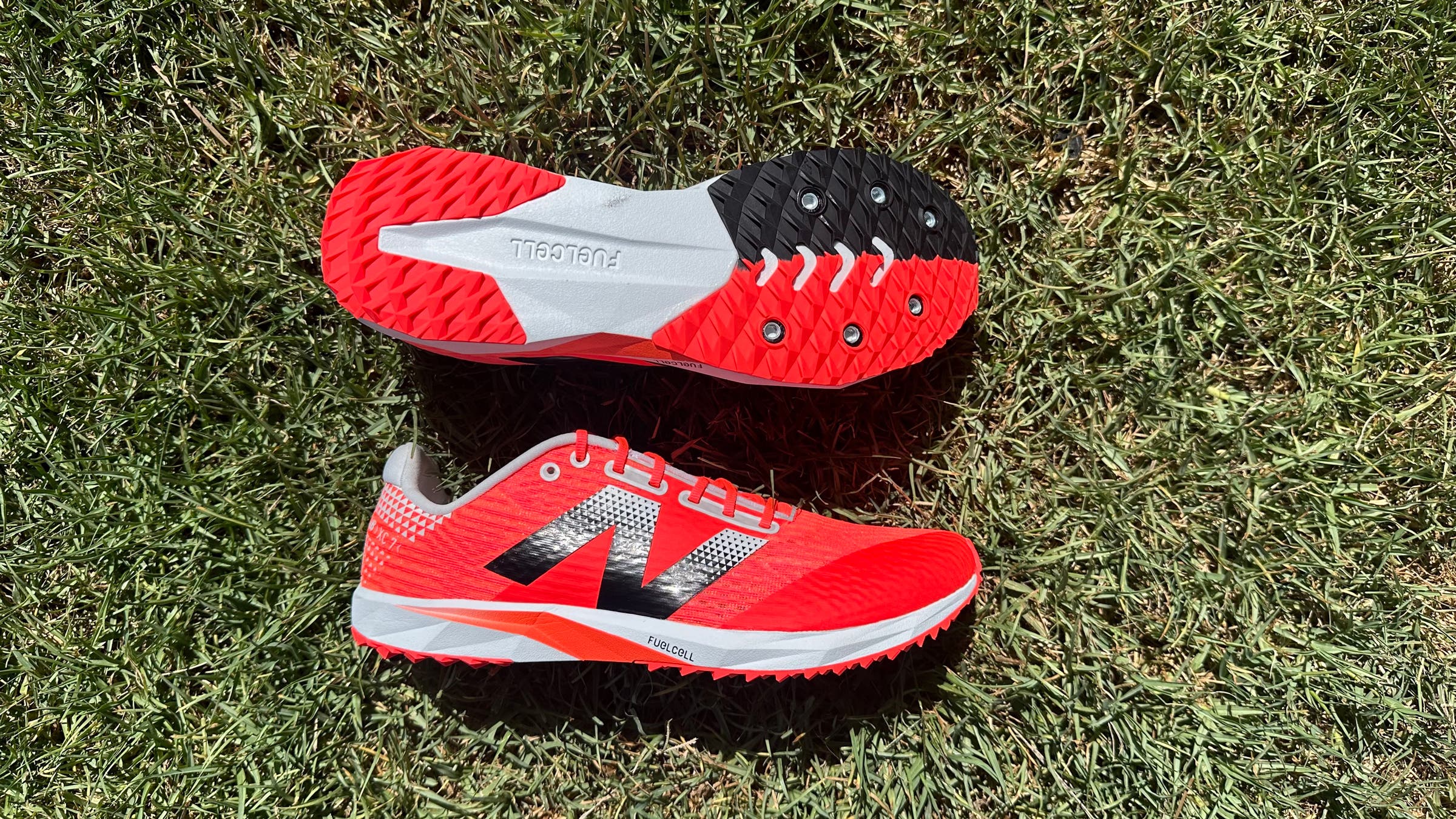
Best Budget
New Balance FuelCell XC7 v5
Weight: 6.6 oz (men’s 9, women’s 10.5)
Spikes: 6-pin removable
Pros and Cons
⊕ Thin midsole gives a flexible, natural feel
⊕ Forgiving footstrike
⊗ Pointed toebox can squeeze toes for some runners
The New Balance FuelCell XC7 v5 stood out as a no-frills cross country spike that delivers everything you need and nothing you don’t at a highly attractive price. Its thin layer of FuelCell foam makes it one of the more flexible running spikes we tested. With no stiffening elements like a hardened spike plate or embedded propulsion plate, the shoe feels remarkably natural underfoot, offering a pliable ride that’s reminiscent of barefoot-style running shoes.
The upper is constructed from a durable mesh with moderate padding around the heel collar. Testers generally found the fit true to size, though the pointed shape of the toebox left some runners’ toes pressed against the front.
“Nothing flashy, just effective, with a forgiving foot strike,” one tester summed up, adding that while it lacked responsiveness and didn’t propel you forward like more expensive spikes, it remains an accessible and reliable option for runners seeking value and simplicity.
If you prefer a sensitive cross country spike that gives you a good feel for the ground and lets your feet flex and engage, there’s no reason to pay more.
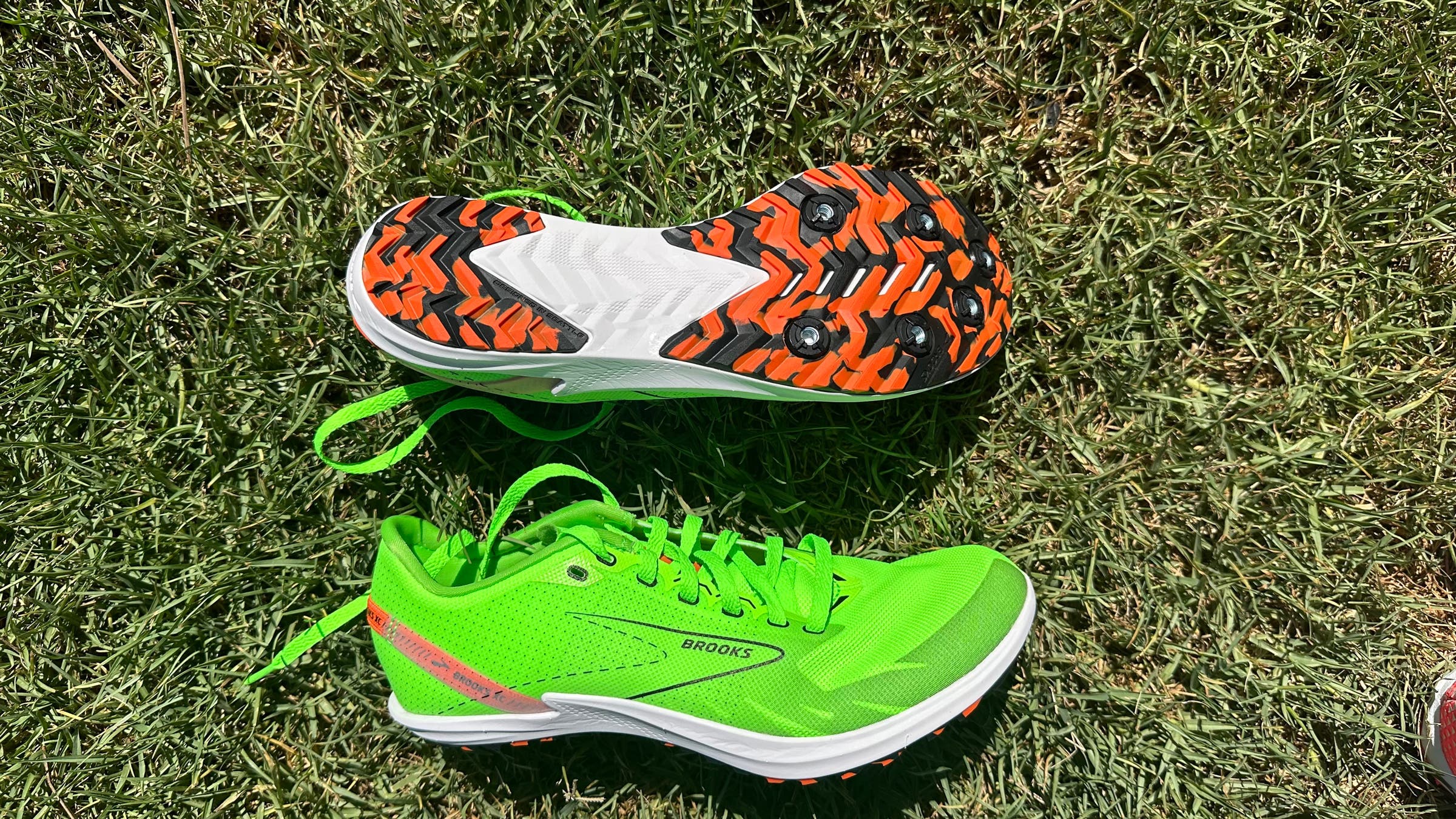
Best Ground Feel
Brooks Draft XC
Weight: 6.5 oz (men’s 9, women’s 10.5)
Spikes: 6-pin removable
Pros and Cons
⊕ Excellent sensitivity
⊕ More accommodating fit
⊗ Requires strong feet and ankles
Like the New Balance FuelCell XC7 v5, the Brooks Draft XC is made with a thin-layered midsole that’s free of a firm spike plate or embedded plate, and offers a flexible, ground-sensitive ride. The difference: Compared to the New Balance, and to most cross country spikes, it has a more voluminous fit, catering to runners with wider feet or who prefer more room for splay. Testers reported that the generous mesh upper provides a great mix of breathability, support, and comfort.
The minimalist design does require a bit more foot and ankle strength than a stiffer spike, as your foot does all the work. “It doesn’t push you down the course like a more aggressive stiff spike that forces you to run on your toes,” reported one tester. On the plus side, another tester noted it is a great option to strengthen your feet and ankles.
Runners who want a cross country spike that moves with their feet and lets them feel and engage with the course—and prefer a looser, more open fit—will find their spike here.
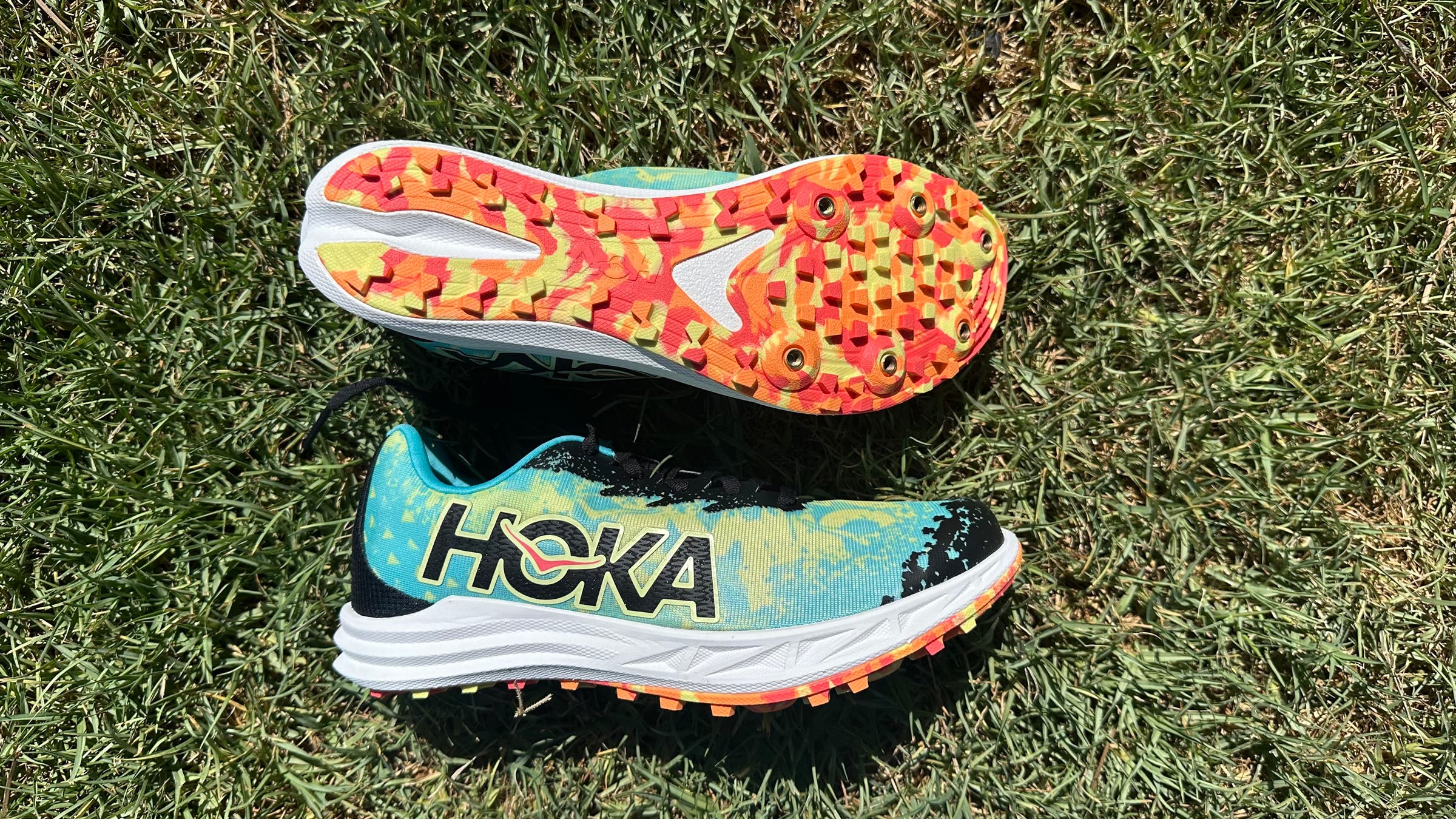
Best For Beginners
Hoka Crescendo XC
Weight: 7.0 oz (men’s 9, women’s 10.5)
Spikes: 6-pin removable
Pros and Cons
⊕ Familiar, running-shoe feel
⊕ Compression-molded EVA midsole is cushioned and stable
⊕ Plateless ride is adaptable and forgiving
⊗ Heavier than competitors
Of all the cross country spikes we tested, the Hoka Crescendo XC is the one we can confidently recommend to any cross country runner, regardless of experience or ability. Testers described the Crescendo XC as feeling more akin to a road racing flat, cushioned, supportive, and forgiving—no matter the foot strike—making it the ideal choice for novice cross country runners.
The relatively thick midsole is made with a compression-molded EVA without a plate and is one of the more cushioned running spikes we tested. Still, the sole has a fairly rigid flex underfoot, providing some leverage on push-off.
The single-layer mesh upper is one of the most substantial we’ve seen on a cross country spike, feeling more like a traditional road-running shoe upper and providing that level of comfort and control. The tradeoff is breathability; it’s not the most airy option. Length-wise, the fit is true to size, though we found the toebox, particularly around the metatarsals, to run narrow.
While it’s not the snappiest spike on the market, it’s approachable and dependable, exactly what newer runners need. More experienced runners might also appreciate it as a durable, supportive option for workouts.
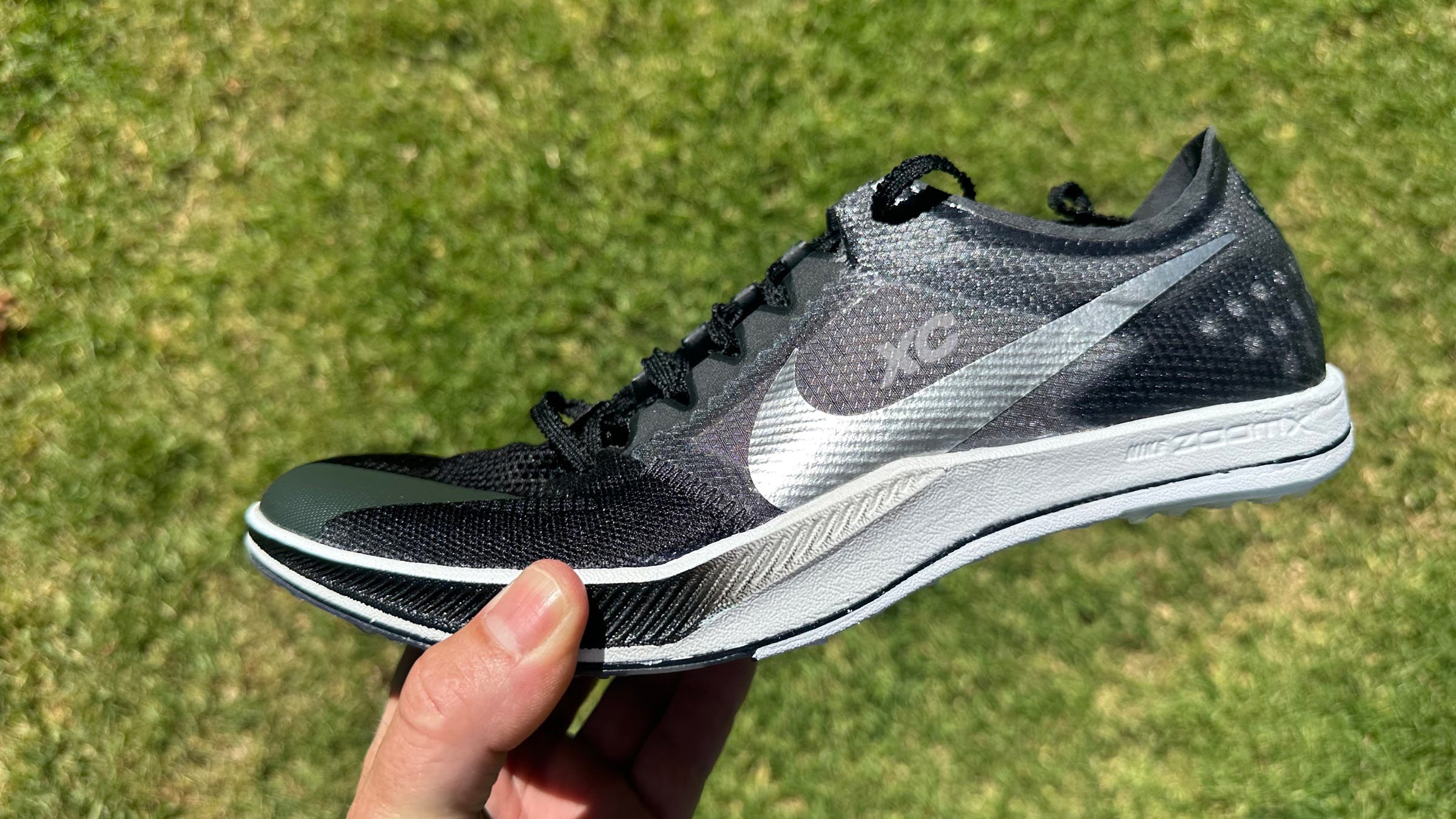
How to Choose Cross Country Spikes
Cross country courses can be brutal: thick grass, sharp turns, and steep climbs and descents. And, of course you’ll get at least one downright nasty, wet, and muddy course. A good pair of cross country spikes will grip the ground, keeping you surefooted and confident. While cross country spikes have less variation than track spikes, they still have nuanced differences that may steer you towards one over the other. Whether you’re a freshman trying out for your first cross country team or an experienced competitor, here’s what you should be looking for in your next pair of XC spikes.
Cushioning
One of the biggest differences between cross country spikes and regular running shoes is the amount of cushioning. Compared to regular running shoes, cross country spikes have very little cushioning. Because of this, most runners will limit time spent in spikes to racing and key workouts. Having an understanding of how much cushioning you prefer can help steer you towards a particular running spike or away from one. I recommend beginner runners pick a spike with more cushioning, like the Hoka Crescendo XC to allow them to develop foot strength.
Sole Stiffness
Sole stiffness describes how flexible, or bendable, the sole of the spike is. Stiffness between spikes can vary greatly, from as rigid as a piece of wood, to as flexible as a piece of rubber. Spike plates, embedded carbon fiber plates, and foam characteristics can make one spike more flexible than another. The degree of stiffness of a cross country spike will affect the mechanics and ride.
Cross country spikes with greater flexibility let your foot work naturally, strengthen the lower leg, and are more adaptable on uneven terrain. Embedded carbon or nylon plates like the one in the Nike ZoomX Dragonfly XC, reduce flexibility but may provide a boost in propulsion and enhance efficiency for certain runners.
Spikes
Most cross country spikes will have a six-pin removable spike outsole that can accommodate different pin sizes. Every runner should always have a few size spikes for different surfaces (i.e., grass vs. dirt) and ground conditions (i.e,. dry vs wet). The default size that works well in most conditions is a quarter- nch. For courses that require a little more grip, such as when conditions are very muddy, sloppy, or snow-covered, you should consider using a three-eighth-inch, or one-half-inch spike. Most of our picks also come in a spikeless design, also known as “flats.” These are great for hard-packed courses or courses with significant paved portions. They can also be a great option for young and first-time cross-country runners.
Fit
This is the most crucial thing to consider when buying cross country spikes. Cross country running requires a lot of sharp turning and steep descents and ascents, often on shifty ground. To successfully maneuver through this terrain, you want a shoe that fits like a second skin. The fit should be tight, not allowing your foot to slide inside the upper at all, but not uncomfortable. Try them on with and without socks to get a sense of how they fit. Some runners prefer to race sockless to get a better feel.
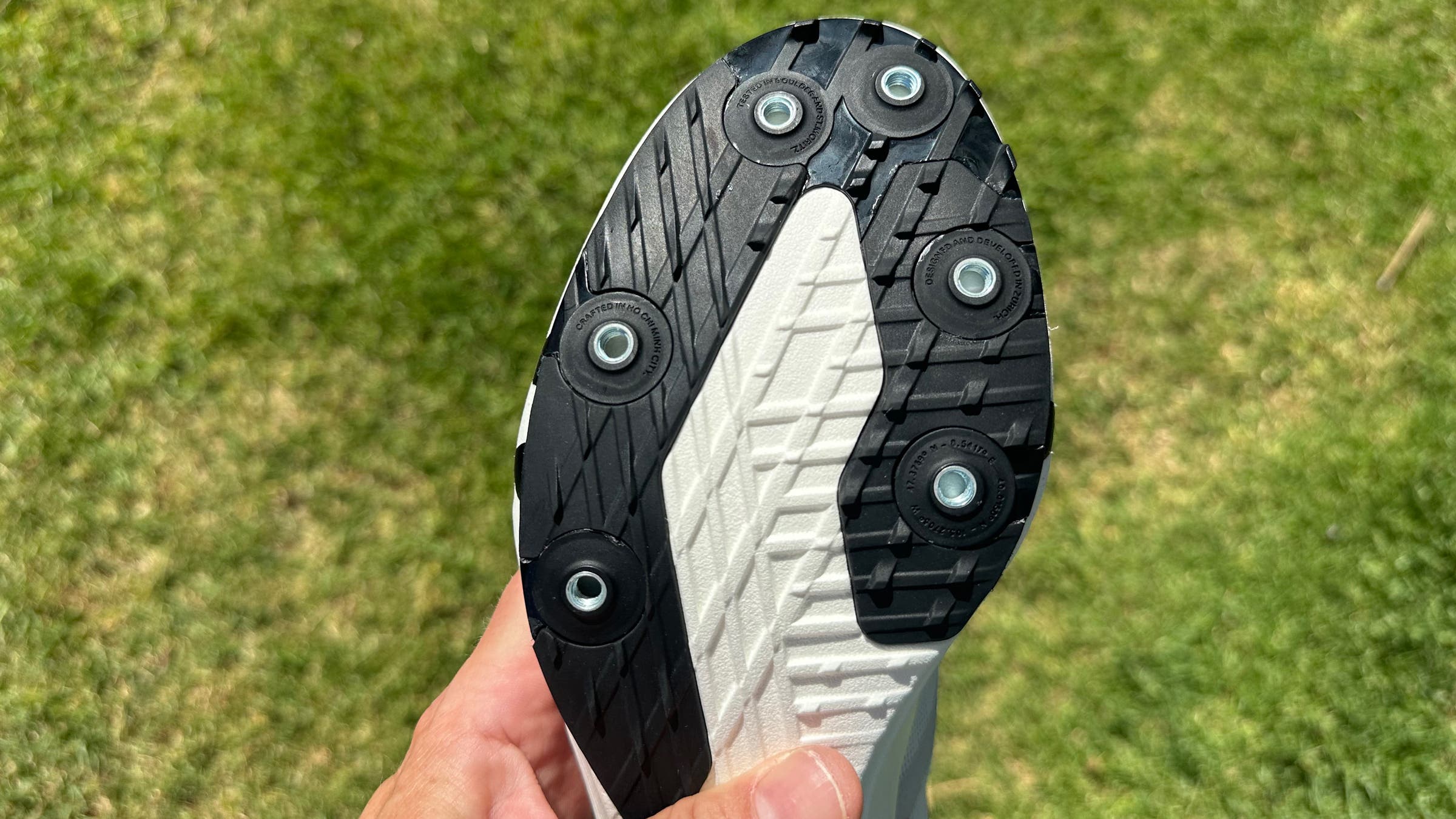
How We Test
To find the best cross country spikes, we recruited four experienced cross country runners, ranging from an Oregon high school runner to former nationally ranked D1 cross country runners. We started by researching every cross country spike on the market, calling in the eight most popular. Each tester received a full set of spikes and had a little over a month to test them. They were asked to judge the cross country spikes on fit, cushioning, grip, and performance, and give an overall rating. Our lead tester, Cory Smith, who also received and tested each spike, compiled the results to determine the best cross country spike for each category, and used their feedback to write the reviews.
Meet Our Lead Tester
Cory Smith has been reviewing all sorts of running shoes, from track spikes to trail shoes, for Outside for over ten years. He was ranked as one of the country’s top 25 cross country runners in high school and competed twice at the NCAA D1 National Cross Country Championships while at Villanova University. Today, he still gets nostalgic when cross country season begins and will jump into an open cross country race in a heartbeat.